Railway bridges and crossings
(Most of the photographs were taken in the 1980s and are themselves of historical interest; more are to be added)
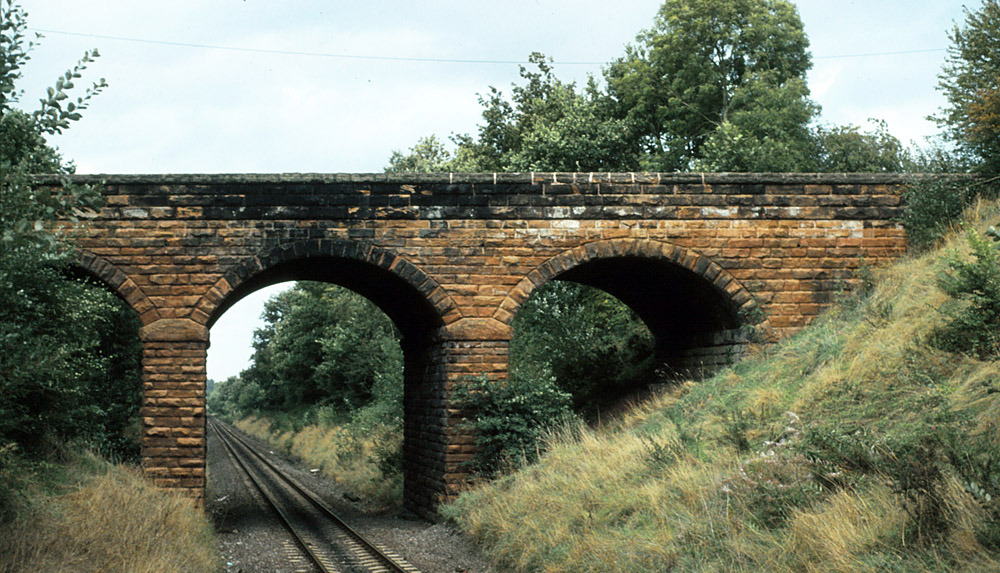
Rarely seen in photographs, this is the bridge that carries Gibbet Hill over the railway. It dates from 1844. Since I took this photograph in the 1980s, the banks have become very overgrown and railings have been added to the parapets. Note there are still sooty deposits from the days of steam.
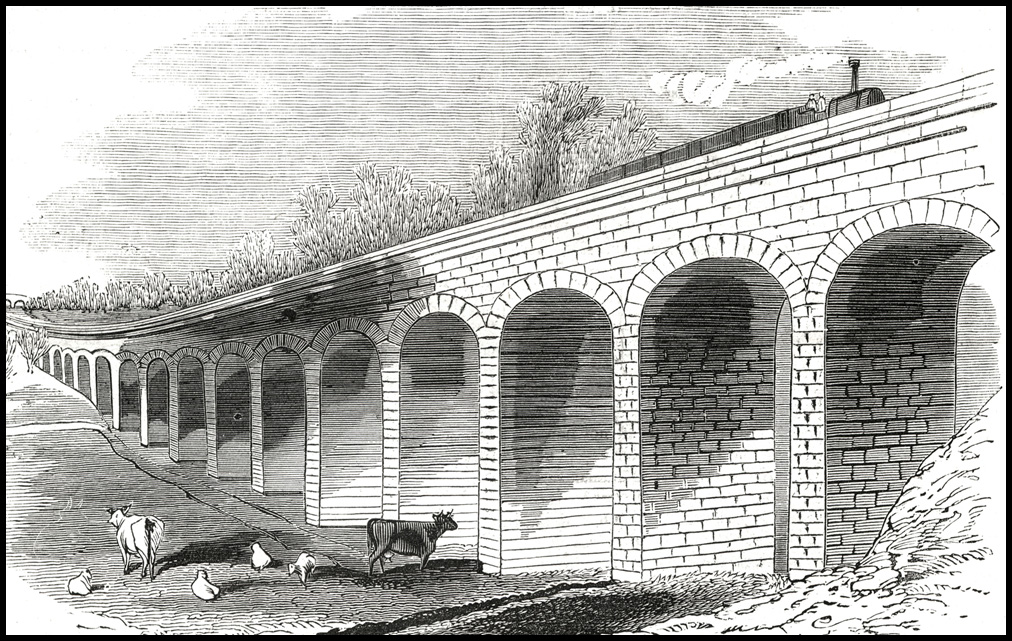
The Milburn Grange viaduct as depicted in the Illustrated London News in 1844.
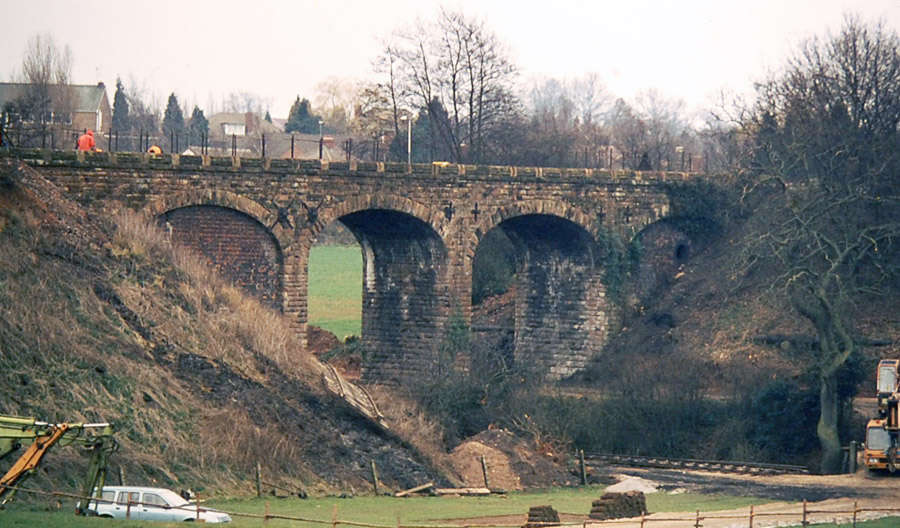
All but these few arches of the Milburn viaduct were filled in between the wars, and these were encased in concrete in the early 1980s.
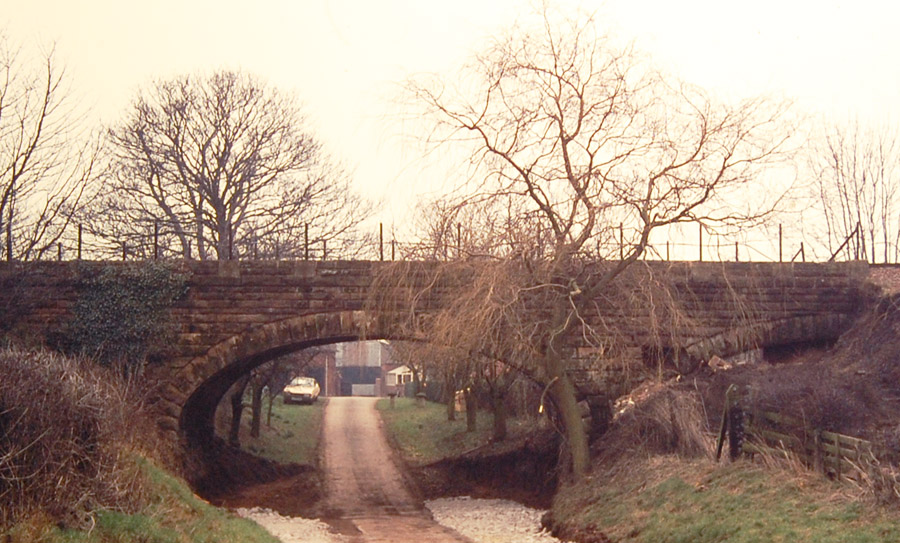
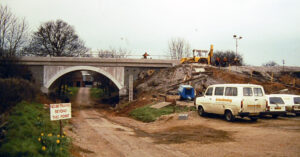
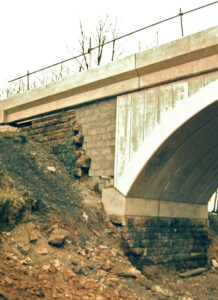
A one arch bridge carried the railway over the farm approach road; this was replaced in the early 1980s with a pre-cast concrete bridge, although there are remnants of the 1844 original.
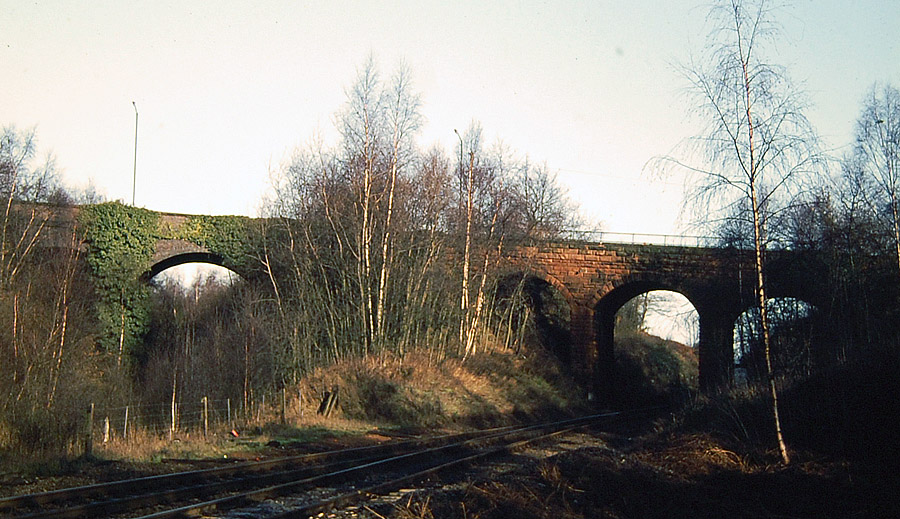
Common Lane is carries by two bridges; the sandstone original from 1844 (above right, and below) and the 1884 brick bridge over the branch to Berkswell.
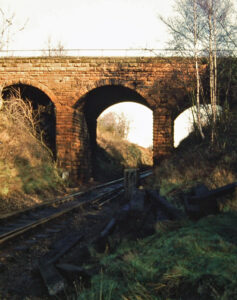
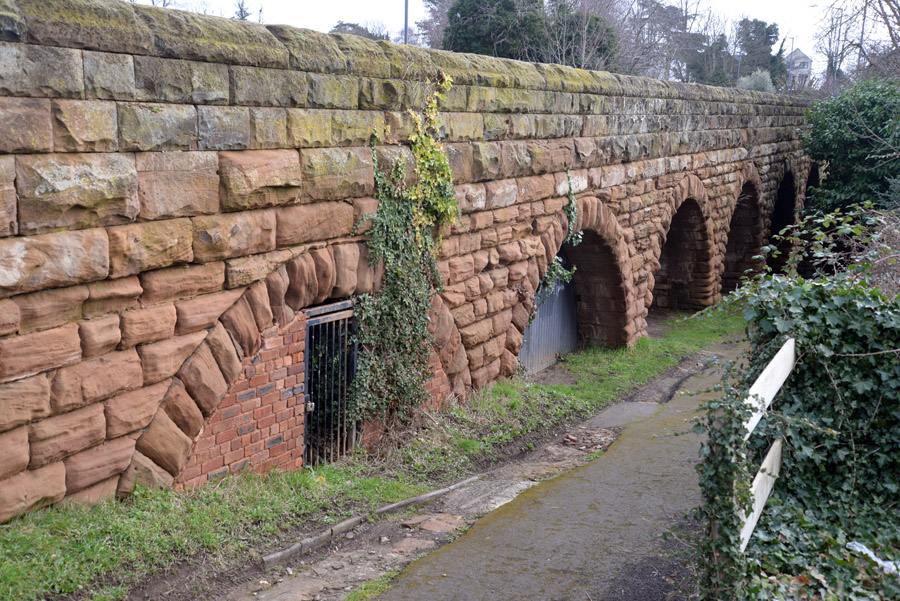
This splendid arched viaduct raises Park Hill so it can pass over the railway line; until then the road had been little more than a trackway down a steep incline with a ford at the bottom. The bridge over the railway is shown on the original plans as a matching single arch; it isn’t known for sure if it was built as such but it has been rebuilt twice, once for the widening scheme in 1883/84, and again in the early 1960s to accommodate planned electrification.
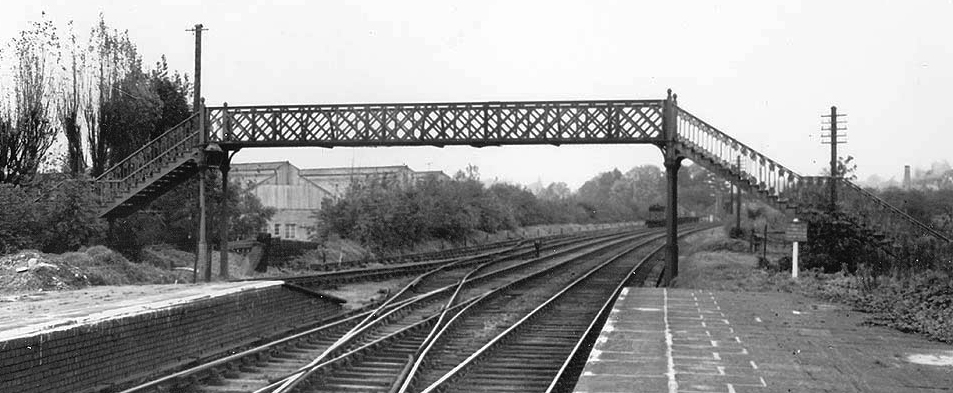
The original Station Steps footbridge just to the north of the station was constructed in about 1884/85 soon after the station had been rebuilt. The footbridge replaced a level crossing on the same site. The bridge was a favourite place for locals to watch the goings-on at the station, and many photographs were taken from it. The bridge was removed and replaced with the current structure in the early 1960s as part of an electrification programme which never materialised. (Origin of the photograph is unknown)
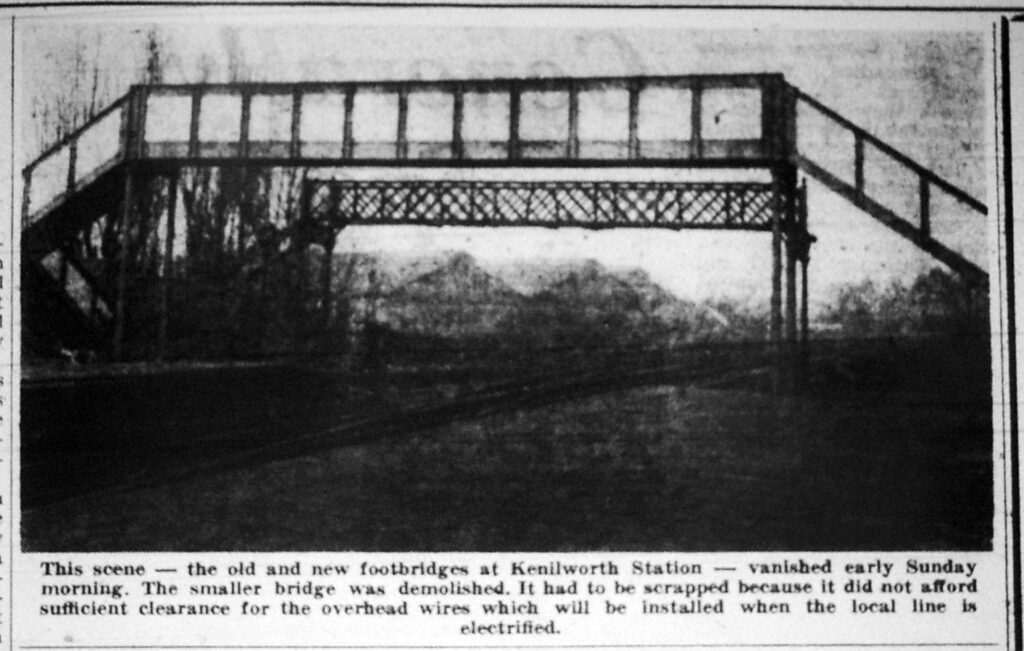
This is the only photograph I have seen of the old and new Station Steps bridges together, taken from the Kenilworth Weekly News 2nd March 1963. The new was built in such a way as to keep the original open whilst work was in progress.
For details of the station buildings, follow these links:
Kenilworth’s first railway station
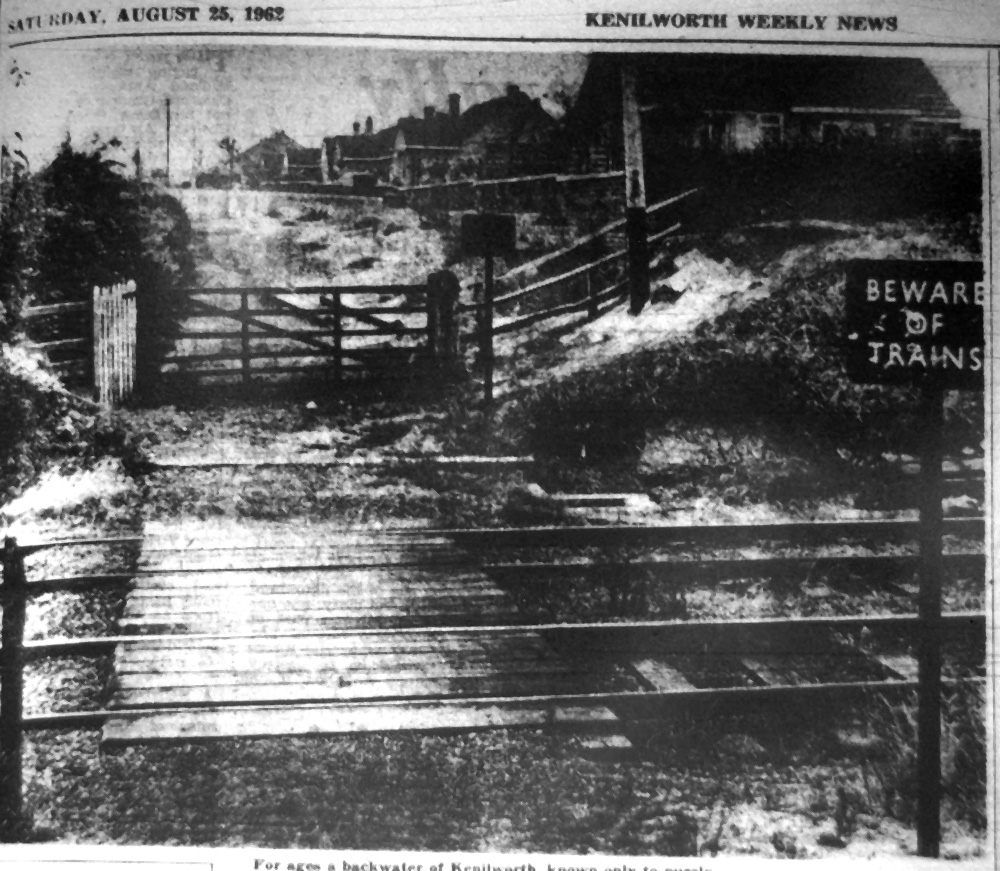
The foot crossing at the end of what became Clarendon Road was in place when the railway opened in 1844. It was replaced with a footbridge with slopes in the early 1960s to facilitate young mothers with pushchairs on the new developments at Farmer Ward Road and beyond.
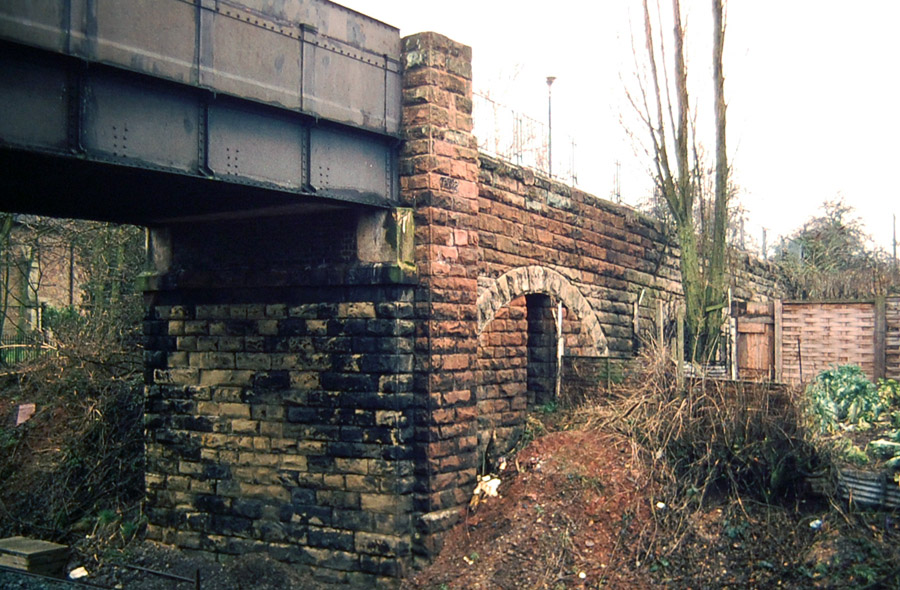
The bridge at St John’s off Clarkes Avenue carrying what was Dodsons Lane but is now a footpath. Unusually, both Warwick white and local red sandstone was used in construction in 1844. It was probably originally just arches, the girders are likely part of the rebuilding in 1883/84 for the doubling of the track. It can be seen that the bridge has been raised, this was likely to have been done in preparation for electrification in the early 1960s.
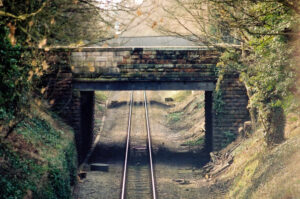
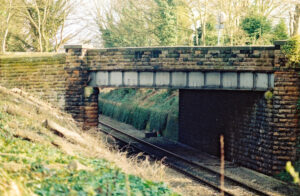
The bridge carrying the road over the railway at St Johns is straight on the station side (left) and skew on the other (right). Originally for single track, it was rebuilt in 1883/84 to pass over two tracks; it can be seen that one side of the cutting is original, the other has been cut back and walled in.
(Link to St Johns bridge rebuild – under construction)
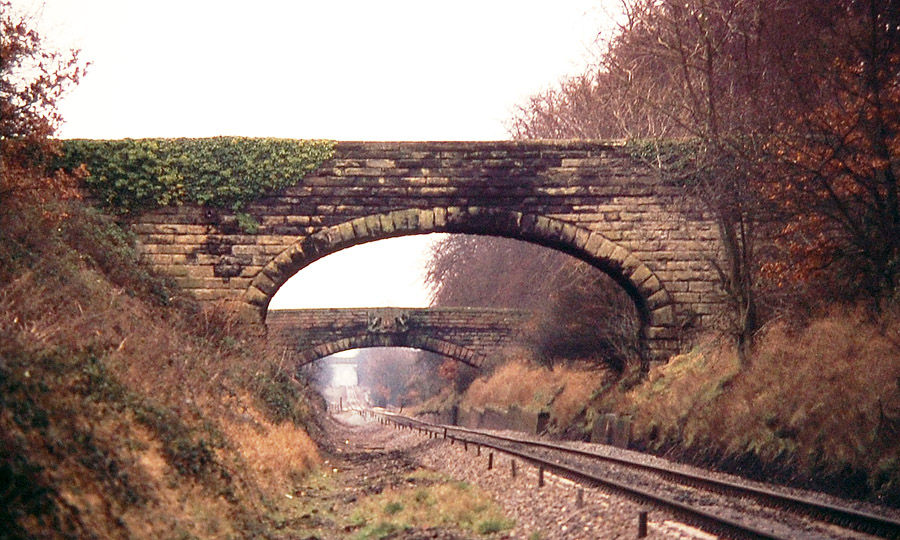
South of the town are these two original 1844 bridges. Originally farm tracks, they will provide access to the new Kenilworth Rugby Club ground.
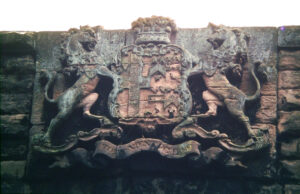
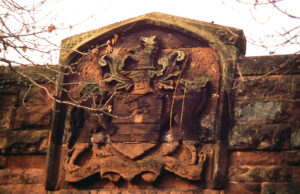
The second of the bridges carries these coat of arms of the Leigh family.
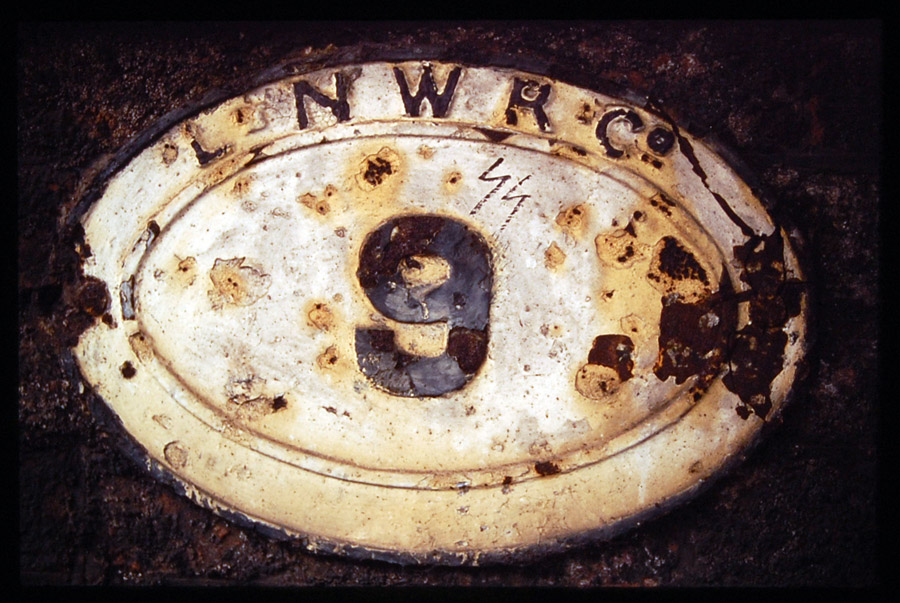
Forty years ago the Coat of Arms bridge carried this bridge plate, since destroyed.
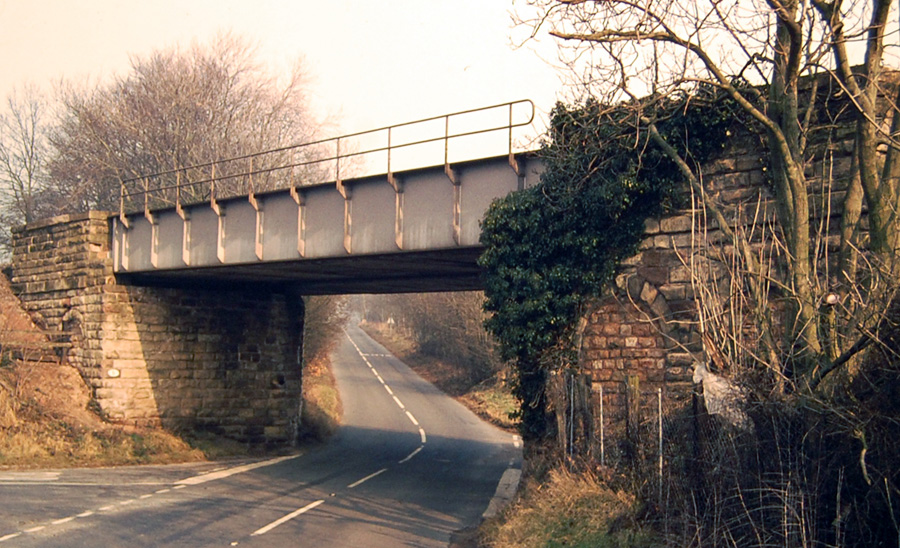
This bridge is over the crossroads near Leek Wootton. The stonework this side is the original from 1844; it was doubled in 1884 and both bridges survive, but the track is laid over the original. The original bridge deck, built mostly of wood with wrought iron cross beams, collapsed in 1869 when a repair to one of the beams gave way. Leek Wootton bridge collapse
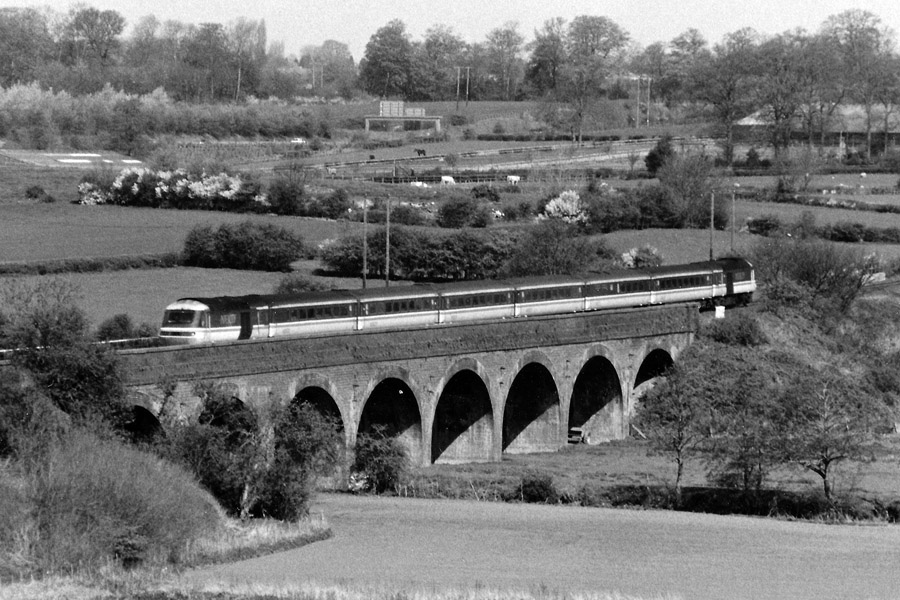
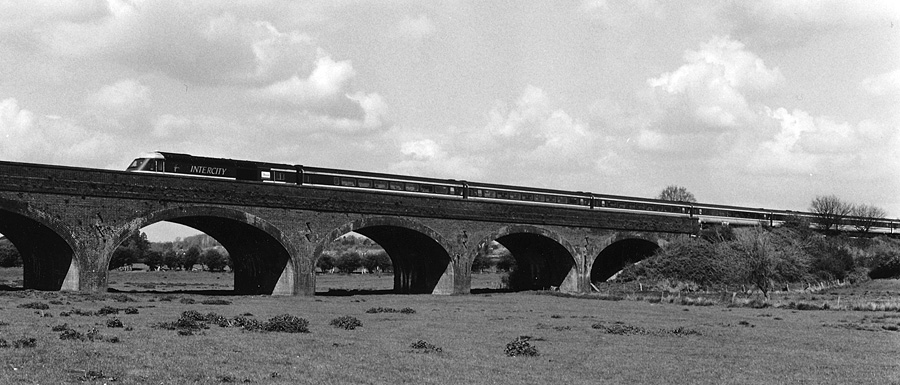
This viaduct over the River Avon near Leek Wootton was doubled in width in 1884. The original side still has a plate commemorating the line’s construction.
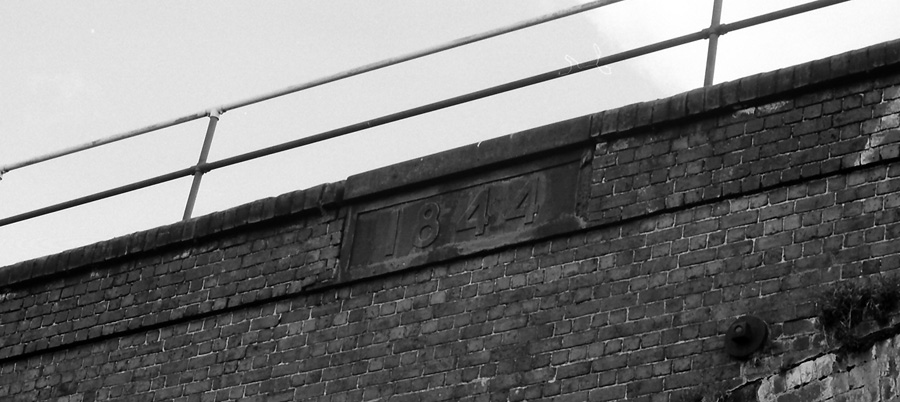
More Railway articles on this website:
Kenilworth’s Railway, a brief history of its early years Kenilworth’s First railway station
Kenilworth’s Second Station Kenilworth Second Station Demolished Kenilworth’s Third Station
The Railway by Maps Railway Protestations – 1840 & 2010 Iconic Station Photograph Investigated
The end for Historic Bridges? Demolition of historic building Railway gallery